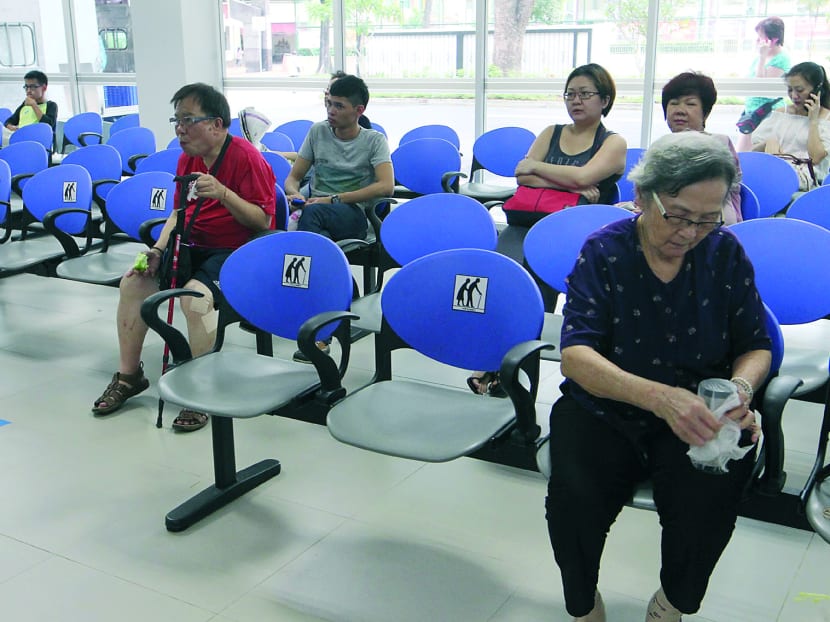MOH to reorganise public healthcare system into 3 clusters
SINGAPORE — The six regional public healthcare clusters in Singapore will be reorganised into three for the central, eastern and western regions, each to serve about 1.1 to 1.5 million residents.
SINGAPORE — The six regional public healthcare clusters in Singapore will be reorganised into three for the central, eastern and western regions, each to serve about 1.1 to 1.5 million residents.
In the central region, Alexandra Health System will merge with National Healthcare Group (NHG), retaining the NHG name.
In the east, Eastern Health Alliance will merge with Singapore Health Services (SingHealth), to be under SingHealth’s banner. And in the west, Jurong Health Services will merge with National University Health System (NUHS), to be part of NUHS.
Polyclinics will also be reorganised, in line with the geographical reach of the three new clusters. A third polyclinic group, National University Polyclinics, will be formed under NUHS.
Four polyclinics under NHG — Bukit Batok, Choa Chu Kang, Clementi and Jurong — as well as the Queenstown Polyclinic under SingHealth will be put under NUHS.
The Ministry of Health (MOH) said in a statement on Wednesday (Jan 18) that the consolidation is expected to be completed by early next year, adding that the change would not require any action from patients of all the public healthcare institutions and they can continue with their existing healthcare arrangements and appointments.
Each cluster will also keep the national specialty centres and specialised hospitals that they now oversee, as these institutions serve the national population. For instance, the National Cancer Centre Singapore will remain under SingHealth and the Institute of Mental Health will remain under NHG.
Health Minister Gan Kim Yong said that this reorganisation will enable Singapore to meet “future healthcare challenges”.
Each new cluster will have a fuller range of capabilities and facilities across different care settings, and will be able to deliver more comprehensive care and person-centred health promotion. The clusters would also be able to implement changes more swiftly and decisively this way.
Mr Gan noted that despite improvements to accessibility, affordability and quality of healthcare in Singapore under the Healthcare 2020 Masterplan, “we cannot afford to stay still as there remain many challenges ahead, such as our ageing population, increased chronic disease burden and the need to manage future growth in healthcare manpower and spending”.
Heading the new clusters are Professor Ivy Ng (SingHealth), Professor Philip Choo (NHG) and Professor John Wong Eu Li (NUHS). Dr Lew Yii Jen, who is senior director of clinical services at NHG Polyclinics, will move to NUHS to be chief executive of the new National University Polyclinics.
The heads affirmed that there are benefits to the changes, although Prof Choo acknowledged that as with any re-organisation, “change can understandably be uncomfortable and unsettling for some”.
For the healthcare workers, the MOH said that almost everyone would continue in their current roles within their current teams. A “small number” may eventually be re-deployed as the new clusters optimise their manpower.
“In such cases, staff members will be offered jobs that match their experience and skillsets without any changes to their current salaries.
The clusters will consult with the union and staff members on these changes,” the ministry said.
Healthcare analyst Jeremy Lim of global consultancy firm Oliver Wyman said that while the casual observer may criticise the latest move as “old wine in new bottles”, “the intent is probably deeply strategic”.
“What’s different this time is that the public healthcare system has fully embraced its mission of health rather than simply healthcare, and hence the focus is equally on preventive health and community well-being, as it is on acute medicine in the clinic or hospital setting,” Dr Lim said.
The clusters have in recent years increasingly worked with private general practitioners, hospices and community hospitals, as well as social service providers and the grassroots, he noted.







